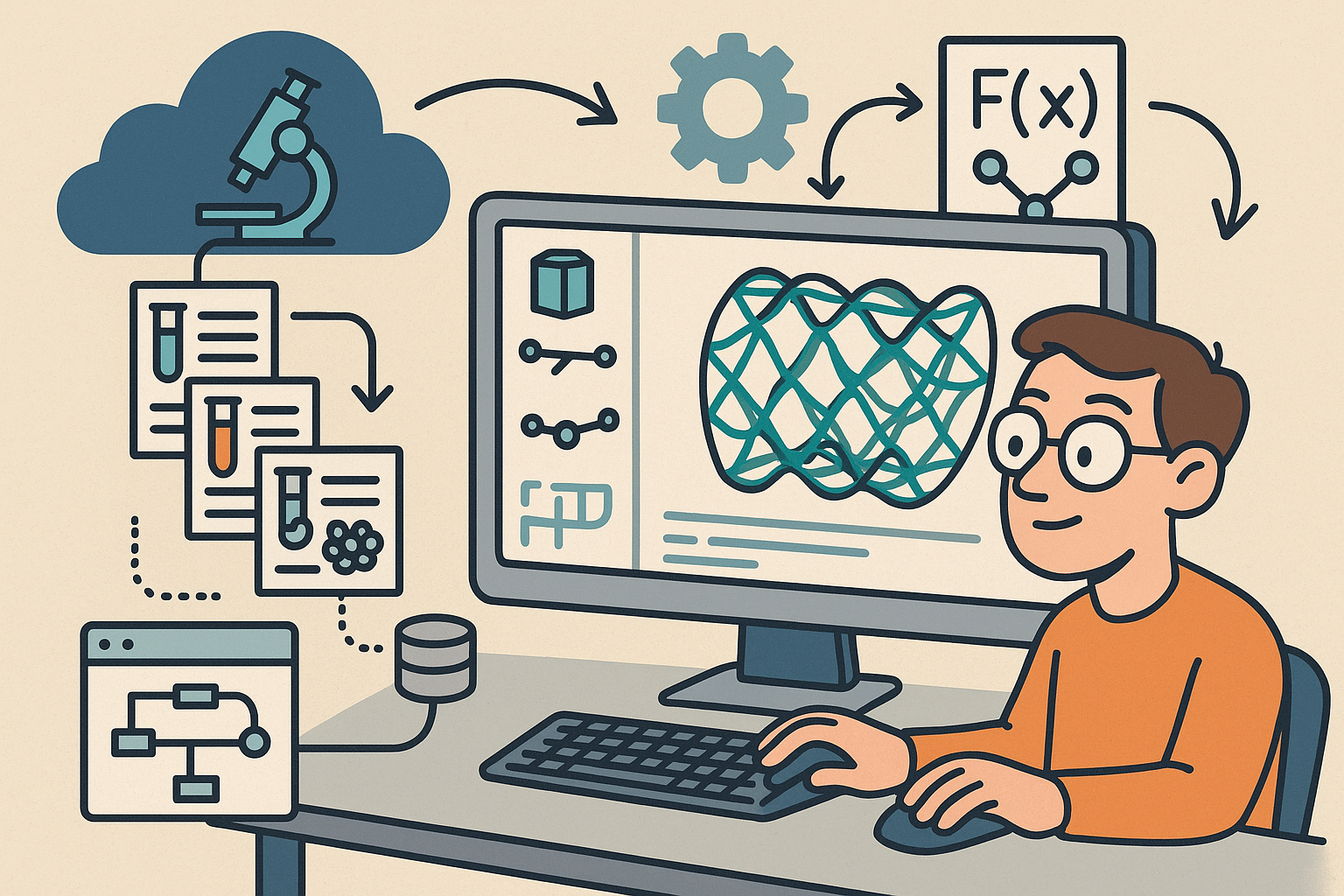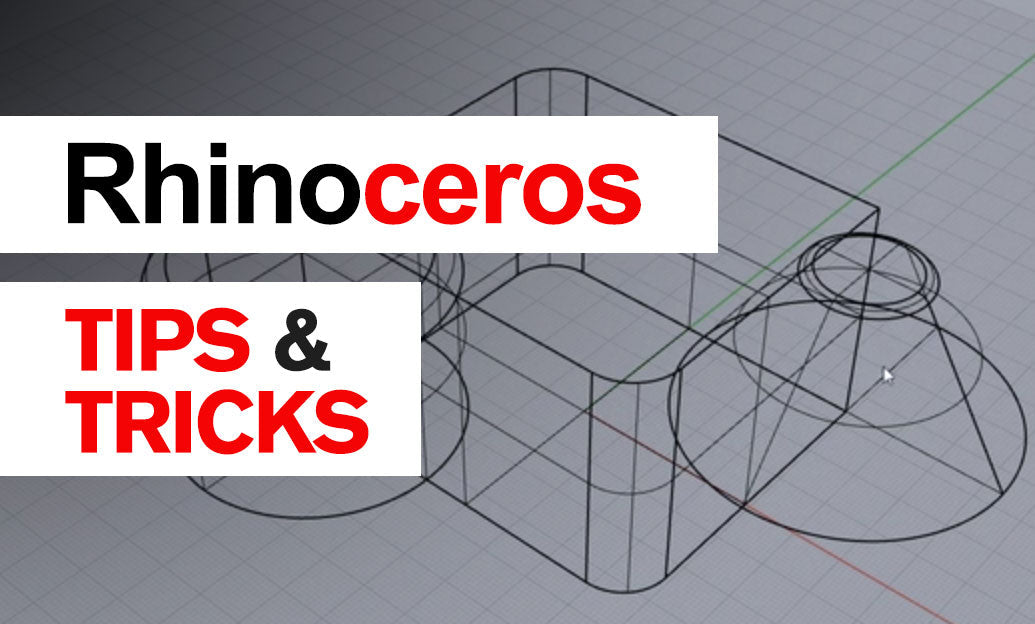Your Cart is Empty
Customer Testimonials
-
"Great customer service. The folks at Novedge were super helpful in navigating a somewhat complicated order including software upgrades and serial numbers in various stages of inactivity. They were friendly and helpful throughout the process.."
Ruben Ruckmark
"Quick & very helpful. We have been using Novedge for years and are very happy with their quick service when we need to make a purchase and excellent support resolving any issues."
Will Woodson
"Scott is the best. He reminds me about subscriptions dates, guides me in the correct direction for updates. He always responds promptly to me. He is literally the reason I continue to work with Novedge and will do so in the future."
Edward Mchugh
"Calvin Lok is “the man”. After my purchase of Sketchup 2021, he called me and provided step-by-step instructions to ease me through difficulties I was having with the setup of my new software."
Mike Borzage
Design Software History: From Splines to NURBS: Mathematical Foundations, Industry Adoption, and Practical Challenges
November 03, 2025 14 min read


From splines to NURBS: the mathematical lineage
Splines as a concept
Long before digital geometry became a discipline, industrial designers shaped curves with a physical drafting aid: a thin, flexible strip called a spline. The mathematics behind these tools was given modern form when I. J. Schoenberg formalized spline functions in 1946, framing them as piecewise polynomials with continuity at joints. That deceptively simple framing—polynomials stitched together with specified continuity—gave engineers a vocabulary to describe not just a line on paper, but the smoothness demands of real products. Schoenberg’s work tied splines to approximation theory and numerical analysis, opening a path for engineering-quality fitting and smoothing. By the 1950s and 1960s, the connection between splines and computational methods matured: engineers could prescribe continuity (C0 positional, C1 tangential, C2 curvature) while localizing edits to a limited region—properties that mechanical and automotive industries would later insist on for body panels and turbine blades.
As computers arrived, the spline idea met the needs of early CAD/CAM: represent a curve that balances smoothness, locality, and stable evaluation. The ascent of spline theory also married well with emerging finite element analysis, where piecewise polynomials and continuity constraints were already native concepts. The bridge between the intuitive designer’s strip and computational geometry was complete: splines were no longer just drafting aids; they became a programmable language for shape. That transition set the stage for the specialized bases and algorithms that followed, culminating in the unified, rational, non-uniform form that industry ultimately adopted as NURBS.
- I. J. Schoenberg (1946): spline functions for smooth approximation.
- Continuity hierarchy: C0, C1, C2 enforce positional, tangential, and curvature smoothness.
- Piecewise polynomials enable locality and numerically tractable evaluation.
B-splines emerge and stabilize evaluation
The practical breakthrough that put splines on a robust computational footing was the development of B-splines and their efficient evaluation. In the early 1970s, M. G. Cox and Carl de Boor introduced what is now known as the Cox–de Boor algorithm, a numerically stable recursion to evaluate B-splines for any non-uniform knot vector. B-splines furnish a basis with compact support: each basis function influences a bounded span, creating inherent locality for edits and predictable behavior under refinement. A designer can insert knots to localize changes without altering the global shape, or elevate degree to gain smoothness, all while preserving the original geometry—an essential capability for collaborative engineering where downstream CAM and analysis depend on geometry consistency.
The B-spline framework also generalized the notion of parameterization via knot vectors, which could be uniform or non-uniform to bias parameter space where detail was needed. It enabled powerful algorithms that became everyday tools: knot insertion for local refinement, degree elevation for continuity control, and blossoming for rigorous derivations of identities and subdivision rules. Crucially, the algorithmic stability of B-splines matched the realities of tolerance-driven CAD/CAM. Software had to be deterministic, repeatable, and robust against floating-point noise; B-splines delivered on all counts. By the time automakers and airframe manufacturers sought digital methods for exterior skins, the core ingredients—basis functions with locality, stable evaluation, and parameter control—were ready for industrialization.
- M. G. Cox and Carl de Boor: algorithmic foundations for stable evaluation.
- Compact support and locality: edits don’t ripple across the whole model.
- Knot insertion and degree elevation preserve shape while increasing flexibility.
Industrial curve pioneers
While mathematicians refined spline theory, industrial pioneers at French automakers translated those ideas into practical curve and surface design. Paul de Casteljau at Citroën (late 1950s) devised the de Casteljau algorithm, a numerically stable recursive construction of Bézier curves and surfaces using Bernstein polynomials. Citroën kept the method internal, but its influence seeped into practice as a standard workhorse for robust curve evaluation. In parallel, Pierre Bézier at Renault (1960s) formalized what became known as Bézier curves and surfaces and led the development of UNISURF (1968), one of the first systems to merge design and manufacturing in a digital freeform pipeline. UNISURF didn’t just draw beautiful surfaces; it connected them to machining, ensuring that the mathematical form was manufacturable, toolpathable, and measurable—an enormous leap for automotive body engineering.
Bézier’s adoption of control polygons, convex hull properties, and the subdivision-friendly Bernstein basis gave designers visual and intuitive control with accommodating mathematics. The public visibility of Bézier’s work, amplified by Renault’s advocacy and publications, catalyzed a wave of implementations. Soon Bézier patches and blends formed the vocabulary of freeform surfacing in both Europe and North America. That said, rational forms and non-uniform parameterization were still in the wings. The design world could shape cars with Béziers, but a single mathematical family that spanned freeform and exact conics (critical for wheels, reflectors, and aerodynamic sections) had not fully arrived. The bridge from Bézier’s industrial elegance to a universal framework would be built by rational B-splines.
- Paul de Casteljau: recursive algorithm for robust Bézier evaluation (initially internal at Citroën).
- Pierre Bézier and UNISURF (1968): integrated freeform design with manufacturing at Renault.
- Control polygons and convex hull properties provide design intuition and numerical safety.
The “R” and “NU” in NURBS
In 1975, R. Ken Versprille at Syracuse University introduced rational B-splines, unifying Bézier and B-spline formulations under a projective framework by adding weights to control points. The “R” in NURBS—rational—meant that designers could represent circles, ellipses, and other conics exactly, rather than approximate them with polynomials. Weighted control points, interpreted in homogeneous coordinates, provided a single, compact representation spanning freeform and analytic geometry. Equally important, the “NU”—non-uniform knot vectors—gave designers and systems the ability to localize parameter space wherever detail, curvature control, or transition management was demanded. In one stroke, rational B-splines standardized the language of curves and surfaces across styling, engineering, and manufacturing.
For real products, exact conics were nonnegotiable: tires and wheels, structural arcs, optical reflectors, and aerodynamic sections all required precise analytic forms. Rational weights delivered this without abandoning the beloved locality and refinement rules of B-splines. This coherence was not just elegant; it was operationally critical. It allowed CAD to mix analytical entities (lines, circles) and freeform patches within a single B-rep framework, enabling blends, fillets, and offsets to be computed consistently. By the early 1980s, the marriage of rational weights and non-uniform knots gave software vendors the canonical geometry substrate they could implement, optimize, and certify against manufacturing tolerances.
- R. Ken Versprille (1975): rational B-splines unite Bézier, B-spline, and conics.
- Non-uniform knot vectors: local control and flexible parameterization.
- Exact conic representation: a core requirement for industry-grade CAD/CAM.
Canonical texts and educators
Once the mathematics crystallized, the community needed authoritative texts and educators to codify practice and ensure reproducibility. Gerald Farin’s “Curves and Surfaces for CAGD” educated generations of engineers on the geometric and numerical foundations of NURBS, with careful treatments of continuity, subdivision, and surface interrogation. Les Piegl and Wayne Tiller’s “The NURBS Book” (1995) became the definitive reference, covering algorithmic details—knot insertion, degree elevation, surface-surface intersections, trimming, and tessellation—backed by sample code and rigorous numerics. Practitioners could finally point to a shared, detailed blueprint that mapped theory to robust implementations. Alyn Rockwood, along with contemporaries across academia and industry, pushed practical algorithms for class-A surfacing, emphasizing curvature-controlled blends, highlight analysis, and robust evaluation routines suitable for production CAD kernels.
These texts synchronized a global workforce—automakers, airframers, tooling vendors, and software houses—around a common computational culture. They also influenced the architecture of geometry kernels and CAD UIs: control point displays, knot editing, curvature plots, and trimming workflows trace back to these codifications. Importantly, the books did not shy from numerical subtleties: they addressed conditioning, parameterization fairness, and strategies for reliable intersection and offsetting—all recurring pain points in production. The result was an ecosystem armed with shared algorithms and clear expectations, allowing vendors to converge on interoperable behavior and customers to trust that a design authored in one NURBS-centric system could be interrogated and machined in another.
- Gerald Farin: geometric continuity and evaluation fundamentals.
- Les Piegl and Wayne Tiller: comprehensive algorithms and practical code guidance.
- Alyn Rockwood: emphasis on class-A methods and numerically robust surfacing.
From research to industry backbone: tools, kernels, and standards
Early surface modelers and automotive/aerospace adoption
By the late 1970s and 1980s, the theoretical arc of splines reached the factory floor. Dassault Systèmes’ CATIA emerged as a premier system for aerospace and automotive freeform surfaces, adopted by organizations like Airbus and later Boeing for airframe and interior design. CATIA’s surfacing modules exposed NURBS control points, knots, and trimming in a way that engineers could use to produce machining-ready skins. In parallel, ICEM Surf—originally developed by ICEM and later integrated into Siemens portfolios—became synonymous with class-A surfacing for exterior automotive panels, where highlight quality, curvature continuity (G2/G3), and patch layout discipline are the definition of excellence. Alias (Alias Research, later Alias|Wavefront and acquired by Autodesk) dominated industrial design and entertainment visualization, delivering fluid NURBS workflows that shaped consumer products and visual effects long before the industry pivoted toward polygonal and subdivision modeling for animation.
The 1980s and 1990s also saw engineering-centric systems integrate advanced surfacing with solid modeling and drafting. SDRC I-DEAS and Unigraphics—later combined into Siemens NX—wove NURBS into end-to-end workflows: concept surfacing, parametric feature modeling, assembly management, and downstream CAM. These platforms institutionalized processes like zebra-stripe evaluation, curvature combs, and skinning tools, making them part of the engineer’s daily toolkit. Crucially, they linked surfacing to manufacturing by generating accurate offsets, toolpaths, and inspection data—all derived from NURBS mathematics. In industries where a micron matters, the consistency and exactness of NURBS-driven operations translated directly into cost, quality, and certification advantages.
- CATIA: aerospace and automotive standard for freeform surfaces.
- ICEM Surf: benchmark for exterior class-A quality.
- Alias: industrial design powerhouse with deep NURBS heritage.
- SDRC I-DEAS and Unigraphics/NX: integrated surfacing with engineering and CAM.
Geometry kernels make NURBS ubiquitous
The consolidation of NURBS in industry owes as much to geometry kernels as to end-user systems. Parasolid, originated at Shape Data and later owned by UGS and Siemens (since 1988), standardized the notion of a solid as a B-rep whose faces are predominantly trimmed NURBS patches augmented by analytic entities. This architecture allowed modelers to combine freeform and mechanical features—fillets, blends, shells—by operating on a consistent substrate. ACIS (Spatial, founded by Dick Sowar in 1989) followed a similar trimmed-NURBS B-rep design and was widely licensed to mid-market CAD products, making high-quality geometry accessible beyond top-tier systems. Open CASCADE, beginning at Matra Datavision and later open-sourced as Open Cascade Technology, provided an open kernel with NURBS surfaces, trimming curves in parametric (UV) and 3D space, and a comprehensive topology framework.
These kernels established the canonical “face-as-trimmed-surface” paradigm. A single parametric surface could host intricate boundaries and holes via trim curves, enabling flexible modeling without exploding patch counts. Moreover, kernels encapsulated numerically careful implementations of intersection, offsetting, and Boolean operations—the crucibles where geometry robustness is tested. Once downstream applications—meshing, rendering, and CAM—learned to expect the trimmed NURBS B-rep pattern, interoperability improved dramatically. Vendors could innovate at the UI and workflow level while relying on kernel vendors for dependable geometric predicates and tolerance strategies.
- Parasolid (1988): trimmed NURBS faces as the backbone of the B-rep.
- ACIS (1989): widely licensed kernel spreading NURBS solids across mid-market CAD.
- Open CASCADE: open-source alternative with full NURBS and trimming support.
Standards lock in interchange
Interchange standards were the glue that bound a heterogeneous market. IGES, which matured through the late 1980s and 1990s, codified rational B-spline curves and surfaces as entities 126 and 128, respectively. This made the exact exchange of NURBS geometry between competing CAD systems routine, even if tolerances and trimming quirks still required care. German automakers, in particular, leaned on VDA-FS, whose focus on freeform surface exchange complemented IGES in high-quality body surfacing contexts. The STEP family then advanced the state of the art: AP203 and AP214 captured geometry along with product structure, while AP242 harmonized these threads and added model-based definition (PMI), cementing NURBS as the geometric lingua franca for long-term archiving and enterprise PLM.
In the late 1990s, Robert McNeel & Associates launched openNURBS, publishing an open specification and C/C++ libraries for the .3dm file format. This pragmatic move ensured that models authored in Rhino could be read faithfully elsewhere, preserving control points, knots, weights, and trims with high fidelity. Collectively, standards and openly specified formats closed the loop: geometry kernels converged on similar data structures, and interchange schemas guaranteed that the “meaning” of NURBS—beyond mere tessellations—survived translation. The result was a predictable pipeline from concept to manufacturing across design houses, suppliers, and toolmakers worldwide.
- IGES entities 126/128: standard rational B-spline curve/surface definitions.
- STEP AP203/AP214/AP242: harmonized geometry and product structure with MBD.
- openNURBS (.3dm): open spec and libraries to preserve NURBS fidelity.
Democratization and specialization
As kernels and standards matured, NURBS-based modeling diffused into parametric, feature-driven CAD for broader engineering markets. PTC’s Pro/ENGINEER (now Creo) pioneered history-based parametric modeling, marrying sketches, constraints, and features to a NURBS-backed solid representation. SolidWorks and Autodesk Inventor replicated and expanded this paradigm for the mid-market, while Autodesk Fusion 360 fused direct editing with parametrics on a cloud-first platform. At the same time, Rhino from Robert McNeel & Associates offered an affordable, NURBS-centric modeler that became a staple for product designers, architects, and naval engineers, emphasizing precise curves and surfaces over heavy feature trees. This democratization put NURBS-based B-reps on millions of desktops, aligning education with industry practice.
On the specialization front, reverse-engineering tools such as Geomagic, Rapidform, and InnovMetric’s PolyWorks built sophisticated pipelines to fit NURBS to 3D scan data. Their toolsets combined segmentation of meshes into developable regions, principal curvature analysis for patch layout, and least-squares fitting with regularization for fair surfaces. The payoff was a closed loop from physical to digital: scan a part, fit a watertight NURBS model, and push it back into CAD for edits, tolerancing, and manufacturing. This capability became pivotal for legacy part digitization, competitive benchmarking, medical devices, and bespoke automotive restoration. With parametric CAD, surfacing specialists, and reverse-engineering all speaking NURBS, the industry gained a coherent and continuous pipeline.
- PTC Pro/ENGINEER (Creo), SolidWorks, Autodesk Inventor/Fusion 360: parametric CAD on NURBS solids.
- Rhino: NURBS-first modeling favored across design disciplines.
- Geomagic, Rapidform, PolyWorks: scan-to-CAD with NURBS fitting and fairing.
Why NURBS won—and where they strain
Technical advantages that made NURBS the default
NURBS won because they delivered a trifecta that industry demanded: exactness, locality, and robustness. First, the rational form represents conic sections exactly—circles, ellipses, parabolas—ensuring that mechanical elements and optics aren’t approximations. Second, non-uniform knot vectors and compactly supported basis functions grant local, predictable edits: a change to a handful of control points doesn’t corrupt distant regions. Third, the Cox–de Boor evaluation, subdivision, and refinement algorithms are numerically stable and compatible with tolerance-driven workflows, making offsets, fillets, and blends reliable. Combined, these properties support a rich set of geometric operations with predictable outcomes, which is essential when thousands of parts must assemble and meet certification requirements.
Equally decisive was the compatibility of NURBS with the B-rep solid modeling paradigm. A trimmed NURBS surface can host complex boundaries without proliferating patches, and its parametric nature provides a clean frame for computing normals, curvature, and offsets. This made toolpath generation, shelling, and feature edits practical. Finally, the ecosystem impact can’t be overstated: education, kernels, and standards converged on the same mathematics, ensuring that algorithms for intersections, tessellation, and healing could be shared, optimized, and tested across vendors. In this environment, NURBS was not merely a representation; it was the contract between design intent and manufacturing reality.
- Exactness and continuity: precise conics and controllable C0/C1/C2 (and G2/G3) continuity.
- Local, predictable edits: knot insertion and degree elevation preserve shape.
- Robust evaluation: stable recursion and subdivision match industrial tolerances.
- Trimmed-surface B-reps: efficient representation of complex boundaries on a single patch.
Production workflows built around NURBS
Production pipelines developed semantics around NURBS that are now industry ritual. Surface quality is interrogated with curvature plots, combs, and zebra stripes—techniques defined over parametric spaces and sensitive to continuity. Class-A surfacing teams in automotive use highlight lines and reflection analysis to enforce G2/G3 conditions across panel boundaries, and they depend on NURBS’ predictable parameterization to avoid artifacts. In CAM, toolpaths, offsets, and scallop calculations pull normals and curvature directly from the analytic form, enabling smoother machining and better surface finishes on 3- and 5-axis mills. Metrology and inspection also rely on analytic curvature for deviation maps, enabling tighter tolerance verification and more reliable acceptance decisions on the shop floor.
Interoperability is the final pillar. Because standards like IGES and STEP, and kernels like Parasolid and ACIS, assume a NURBS-first worldview, the cost and risk of translation diminish. Teams can author in one system, interrogate in another, and machine in a third, confident that control points, weights, and trims retain meaning. Meanwhile, tessellation for visualization or simulation can be regenerated deterministically from the source NURBS, rather than relying on opaque polygonal intermediates. The cumulative effect is an enterprise tuned to NURBS semantics, from upstream styling reviews to downstream CMM inspection, with fewer surprises and a more direct link between design intent and physical outcomes.
- Surfacing/quality: zebra stripes, combs, and highlight maps enforce continuity.
- CAM and metrology: normals and curvature drive precise toolpaths and inspection.
- Interoperability: standards and kernels encode consistent NURBS semantics.
Pain points and responses
NURBS are powerful, but not without strain. The rectangular topology of tensor-product NURBS surfaces makes complex junctions awkward: areas needing high valence (more than four patches meeting) induce singularities or parameterization distortion. Patch layout becomes an art, and enforcing watertightness across dense trim boundaries is challenging. Trimming itself—central to the trimmed NURBS B-rep paradigm—introduces fragility. Boolean operations produce sliver faces and near-degenerate edges that strain numeric tolerances; downstream offsetting and intersection routines then inherit those difficulties. Healing tools and tolerance management mitigate issues, but robustness remains a perennial focus for kernel teams.
The industry has responded with alternatives and hybrids. Subdivision surfaces (e.g., Catmull–Clark) excel at concept modeling with extraordinary points and topological flexibility; designers often convert SubD models to NURBS for manufacturing. T-splines, introduced by T. W. Sederberg and colleagues in 2003 and later commercialized by T-Splines Inc. (acquired by Autodesk in 2011/2012), tackle T-junctions and local refinement within a spline framework, relaxing the rectangular grid without sacrificing smoothness. In simulation, isogeometric analysis (pioneered by Thomas J. R. Hughes and collaborators in the mid-2000s) reuses CAD’s NURBS directly for finite element bases, aiming to close the CAD/CAE gap and eliminate meshing artifacts. Each of these strands recognizes the strengths of NURBS while pushing on known weaknesses: topology flexibility, robustness under Booleans, and seamless handoff to analysis.
- Patch topology: rectangular tensor products struggle at complex junctions.
- Trimming robustness: slivers and tolerance noise complicate Booleans and offsets.
-
Alternatives and hybrids:
- Subdivision surfaces for flexible concept modeling.
- T-splines for T-junctions and local refinement; later integrated into Autodesk tools.
- Isogeometric analysis to unify CAD and FEA bases.
Conclusion
The enduring core and the ecosystem it enabled
NURBS unified curve and surface modeling by combining exact conics, local control through non-uniform knots, and numerically stable evaluation. That combination didn’t merely satisfy mathematicians; it solved the daily requirements of industries where form and function meet certification and cost. Companies like Dassault Systèmes, Siemens, PTC, Autodesk, and McNeel built entire kernels, workflows, and file formats around the trimmed NURBS B-rep. Standards bodies—IGES and STEP—encoded a shared meaning for control points, weights, and knots, ensuring that a surface authored in one system could be interrogated, meshed, and machined in another. The result is an immense installed base: decades of parts, assemblies, and drawings that assume NURBS semantics and that will remain in service for as long as those products are maintained. This installed base is not a constraint; it is a platform. It enables a stable contract between styling, engineering, and manufacturing that makes global supply chains possible.
Even as alternative representations flourish, the core remains. The advantages that led to NURBS’ dominance—analytical exactness, continuity control, and robust algorithms—are as relevant today as they were when rational weights first brought circles into the fold. Kernels continue to refine intersection, offsetting, and Boolean robustness, while visualization pipelines convert analytic geometry into ever-better tessellations for real-time review. Education reinforces this center by teaching designers to think in control points, knots, and trims. As long as industry values precision, predictability, and interoperability, NURBS will anchor the geometry stack.
- Vendors: CATIA, NX, Creo, SolidWorks, Rhino, Fusion 360 align on NURBS semantics.
- Standards: IGES and STEP encode durable, interoperable definitions.
- Longevity: installed bases guarantee NURBS’ continued relevance.
The road ahead: hybrids, automation, and tighter loops
Looking forward, the geometry landscape will be plural, with NURBS at its core and complementary forms at the edges. Subdivision and T-spline-like approaches will handle topology-rich concept models, then convert into NURBS patches where manufacturing demands exactness. Scan-to-CAD workflows will keep advancing, with better segmentation, patch-net inference, and fairing driven by optimization and machine learning, yielding cleaner NURBS reconstructions from dense point clouds. In simulation, isogeometric analysis and spline-based finite elements will reduce the friction between CAD and CAE, enabling higher-fidelity analysis earlier in design. Meanwhile, AI-driven surfacing assistants will propose patch layouts, knot distributions, and initial blends that respect class-A criteria, shortening iteration loops without diluting expert control. The likely future is not a replacement for NURBS, but a synthesis: meshes and implicits for exploration, NURBS for exactness and exchange, and intelligent algorithms that navigate between them to deliver fidelity, automation, and tighter CAD–CAE–CAM integration.
As this synthesis unfolds, kernels and standards will adapt—extending STEP AP242 for richer semantics, improving robustness criteria for trimming, and formalizing links to analysis spaces. The success metric will remain the same as it has for decades: can the chosen representation carry intent from sketch to shop floor, with minimal translation loss and maximum auditability? On that metric, NURBS continue to set the bar, not as an exclusive solution, but as the backbone that makes the modern design and manufacturing ecosystem coherent, extensible, and trustworthy.
- Hybrids: SubD and implicit methods for exploration, NURBS for production.
- Automation: AI-guided surfacing and scan fitting accelerate intent capture.
- Integration: isogeometric analysis tightens CAD–CAE–CAM feedback loops.
Also in Design News

Materials Informatics in Design Software: Parametric, Traceable, Solver-Ready Material Models
November 03, 2025 12 min read
Read More
Cinema 4D Tip: Cinema 4D Constraint Tag — Precise LookAt and Aim Setups
November 03, 2025 2 min read
Read MoreSubscribe
Sign up to get the latest on sales, new releases and more …



